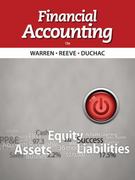DO ONLY EXERCISE 17-11
Sanderson Company's year-end balance sheets follow. Express the balance sheets in common-size per- Exercise 17-7 cents. Round amounts to the nearest one-tenth of a percent. Analyze and comment on the results. Common-size percents P2 At December 31 2012 201 1 2010 Assets Cash $ 30,800 $ 35,625 $ 36,800 Accounts receivable, net 88,500 62.500 49.200 Merchandise inventory 1 1 1.500 82,500 53,000 Prepaid expenses 9.700 9.375 4.000 Plant assets, net . . . 277.500 255,000 229,500 Total assets . . $518,000 $445,000 $372,500 Liabilities and Equity Accounts payable $128,900 $ 75,250 $ 49,250 Long-term notes payable secured by mortgages on plant assets 97,500 102,500 82,500 Common stock, $10 par value 162,500 162,500 162,500 Retained earnings . . . . 129,100 104,750 78,250 Total liabilities and equity .... . . . . . . . . . . . ... $518,000 $445,000 $372,500 718 Chapter 17 Analysis of Financial Statements Exercise 17-9 Refer to the Sanderson Company information in Exercise 17-7. The company's income statements for the Liquidity analysis and years ended December 31, 2012 and 201 1, follow. Assume that all sales are on credit and then compute: interpretation (1) days' sales uncollected, (2) accounts receivable turnover, (3) inventory turnover, and (4) days' sales in P3 inventory. Comment on the changes in the ratios from 2011 to 2012. (Round amounts to one decimal.) For Year Ended December 31 2012 201 1 Sales . . . . . . . . . . . ... . . . . . ... $672,500 $530.000 Cost of goods sold . . .. . . . . . . . .. . $410,225 $344,500 Other operating expenses . . . . . . . . 208,550 133,980 Interest expense . . . . . . 1 1,100 12,300 Income taxes . . . . . . . . 8,525 7.845 Total costs and expenses 638,400 498,625 Net income . $ 34.100 $ 31.375 Earnings per share .. 2.10 1.93 Exercise 17-10 Refer to the Sanderson Company information in Exercises 17-7 and 17-9. Compare the company's long- Risk and capital structure term risk and capital structure positions at the end of 2012 and 2011 by computing these ratios: (1) debt analysis P3 and equity ratios, (2) debt-to-equity ratio, and (3) times interest earned. Comment on these ratio results. Exercise 17-11 Refer to Sanderson Company's financial information in Exercises 17-7 and 17-9. Evaluate the company's Efficiency and efficiency and profitability by computing the following for 2012 and 2011: (1) profit margin ratio, (2) total profitability analysis P3 asset turnover, and (3) return on total assets. Comment on these ratio results







